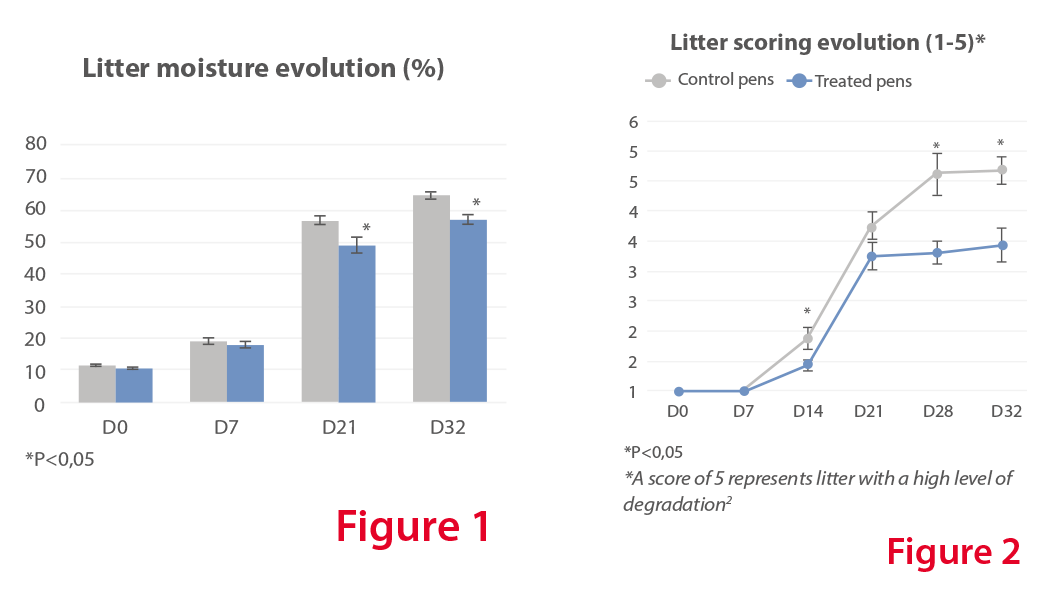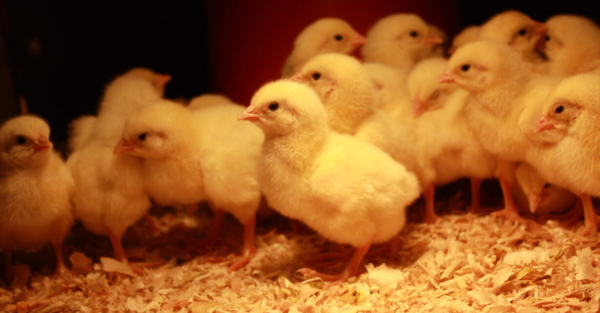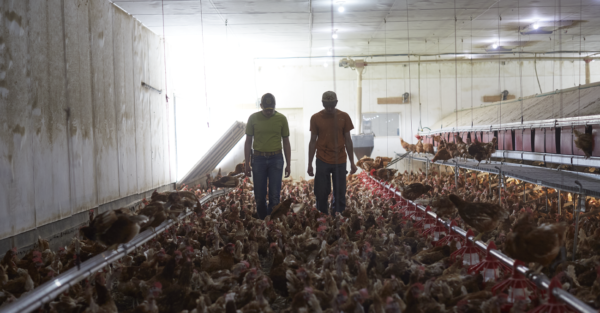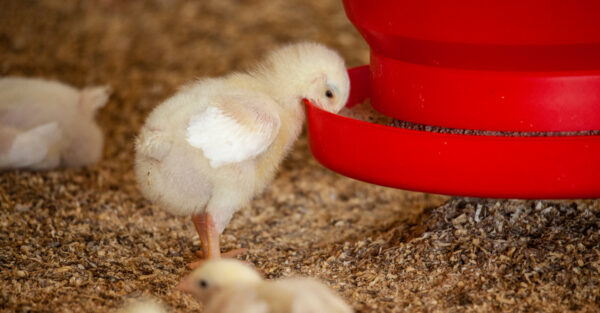Blog | Reading Time 3 minutes
Effect of a bacterial litter conditioner on broiler litter quality
Litter quality management is essential to maintaining animal welfare and health. In turn, good health contributes to animals reaching their full genetic potential.
One way to manage broiler litter quality is to use organic materials (i.e. straw or sawdust), remove them completely at the end of the cycle, then clean and disinfect the building before setting up a new litter for the next cycle1.
During the cycle, the use of a bacterial litter conditioner may help maintain litter quality, thus maintaining a favorable environment for broiler production. Here are some new data shared online ahead of the World Poultry Congress (WPC) 20222.
Broiler study: Experimental farm, France, 2019
A study was conducted in a French experimental farm in 2019 for one 35-day cycle (from D0 to D35) on 194 broilers ROSS 308 AP males. It aimed to assess the effect of a weekly applied bacterial litter conditioner (including an enzyme and bacteria complex) on litter quality and its impact on different broiler performance parameters.
Improved litter quality
During the cycle, the litter moisture increased for both groups as expected due to the accumulation of feces and urine However, from D21 and up to D32, the moisture level was significantly lower in the pens having received the bacterial litter conditioner compared to the control pens (Figure 1).
The result showed an increase in scores during breeding, reflecting a natural degradation of the litter while the broilers were growing (Figure 2).
However, by using a bacterial litter conditioner, the increased score reached a plateau earlier (from D21 to D32) than the control pens, with a lower score overall.
Foot health
Thanks to improved litter quality, the incidence and severity of pododermatitis were also reduced. At D35, the number of broilers affected by pododermatitis was significantly higher in the control pens than in the pens having received the bacterial litter conditioner (83% vs 31%, P<0.05)., The average severity score was also significantly higher (1.41 vs 0.54, P<0.05).
Consequences on broiler performance
At D35, the average weight per broiler was higher in the bacterial litter conditioner pens: +84 g/broiler. In a commercial farm of 10,000 broilers, it could represent a gain of 840 kg/ flock (Table 1).
In conclusion, the use of a bacterial litter conditioner is an interesting tool to maintain a better litter quality during the animal cycle. The bacterial litter conditioner had a direct action on litter characteristics such as moisture and, consequently, on the improvement of the incidence of pododermatitis and the performances of the animals.
| Weight at D35 (g) |
Daily live weight gain (g) |
Feed conversion ratio | Mortality (%) | Heterogeneity (Standard deviation / average)*100 |
|
|---|---|---|---|---|---|
| Control pens | 2,348A | 64,44 | 1,74 | 5,1 | 10,1 |
| Bacterial litter conditioner pens | 2,432B | 67.02 | 1,66 | 3,1 | 9,5 |
Table 1
Published Nov 21, 2021 | Updated Jun 4, 2023
Related articles
Need specific information?
Talk to an expert



